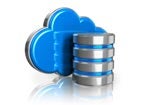There is no question that the cloud holds a lot of promise for the enterprise, but there is peril as well.
Venturing into the unknown is always nerve-wracking, so it is understandable that IT executives would want to take a good, hard look at what they’re getting into before entrusting critical applications and data to the cloud, even if it still resides within their own infrastructure. At the moment, most organizations are pretty comfortable deploying low-level operations like backup and archiving, but signs are pointing to the fact that it will take more than just raw experience to increase the trust factor. Instead, it seems there are some fundamental concerns about the very nature of the beast we’ve created.
According to ISACA and the Cloud Security Alliance, top concerns over the cloud have more to do with governance and regulatory environments than actual technology. A worldwide survey of top cloud users showed that issues like government regulations, legal environments, exit strategies and data ownership are primarily responsible for steady unease about the cloud. When it comes to actual cloud functionality, most respondents expressed at least moderate satisfaction that the cloud was meeting service and strategy expectations, although there is still some doubt regarding the integration of cloud and traditional IT infrastructure.
Legal and regulatory issues are particularly acute in Europe, where the European Commission does exert some control over data protection and other functions through the European Cloud Computing Strategy (ECCS). However, individual countries still write many of the more detailed regulations on their own. This is due primarily to the fact that the ECCS primarily provides directives, not actual laws, aimed at fostering more uniform regulations across member states. This lack of real enforcement makes it difficult for enterprises to leverage the full power of the cloud, which, after all, is designed to remove physical-layer limitations from data environments.
If left unresolved, this lack of regulatory assurance could start to wreak havoc on a number of the key data initiatives that are currently driving the adoption of new data architectures — social networking, for example. As IT strategist Dion Hinchcliffe noted after attending Salesforce’s Dreamforce 12 gathering last month, putting faith in someone else’s infrastructure invariably leads to concerns of manageability, governance and security. The good news is that as data and software become more integrated on the cloud, functionality increases to the point that today’s complex tasks like Big Data analytics and intelligent monitoring are vastly simplified.
And since fear, uncertainty and doubt (FUD) are usually the product of ignorance, cloud test beds are popping up on a regular basis. One of the latest is a new service from HP that provides a 16-week introductory cloud experience backed by a service engineer to help clients transition workloads to the cloud. The system is built on HP’s virtual private cloud based in its Oklahoma data center, helping new users overcome concerns about multi-tenancy, authentication, data migration and other issues. Users can select from a small “compartment” of six VM’s with 4 GB RAM each or a medium compartment with up to 10 VMs and 8 GB RAM each.
Clearly, there is a lot riding on a successful transition to the cloud. Platform companies like HP are looking to cloud services to make up for declines in hardware sales, while the Salesforces of the world have all but built their business strategies around successful implementation of cloud infrastructure.
The last piece of the puzzle is getting the enterprise on board, and they way things stand now, it doesn’t seem like many are eager to up their commitment just yet.



